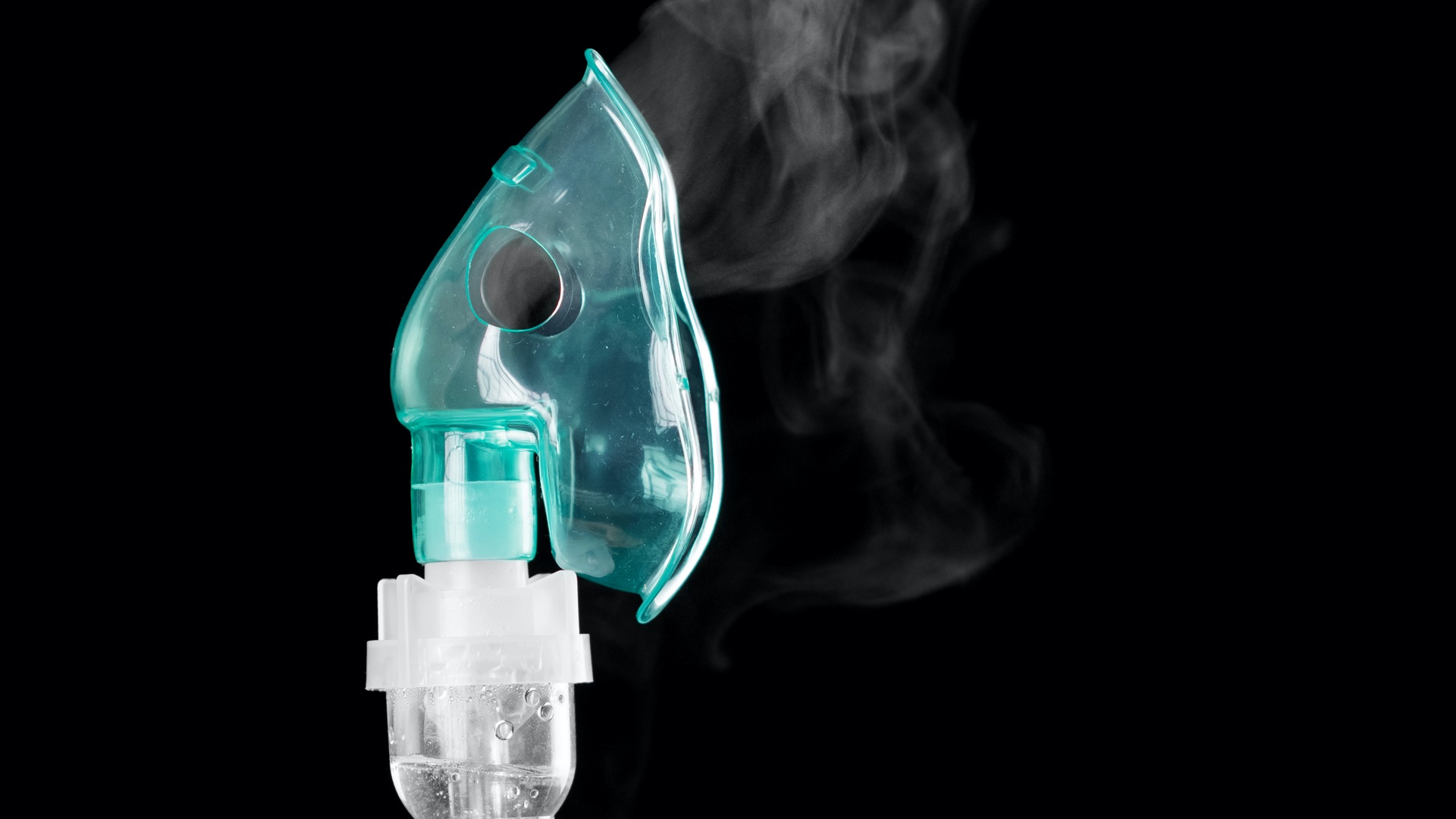Starting a project from scratch means that everything must start from zero. Literature research to…

How does a nebulizer work
Welcome, to this week’s blog! On this website we’ve talked a lot about nebulizers and aerosol treatment, so it’s about time that we explain a bit more about it. In this blog, you’ll learn more about nebulizers, its use, and its importance in healthcare.
Nebulizers are used to provided aerosol treatment to patients with lung diseases, such as asthma, cystic fibrosis, and COPD. Medicine gets transformed to a mist by a compressor. Afterwards, it gets inhaled into the lungs, where it is absorbed by the body. The most popular type is nebulizer systems is the jet nebulizer, which is shown in the figure below. A cup with liquid medicine is put in the compressor. The aerosol is formed here and is ministered to the patient through the tube and the face mask.
Even though the medicines can be administered through metered-dose inhaler, nebulizers have some clear advantages. Jet nebulizers are relatively cheap and can be portable. Moreover, nebulizer system can both use a mask or a mouthpiece. Therefore, it’s (in contrast with metered-dose inhalers) also a viable for infants, small children, and other people that can’t breathe through a mouthpiece.
Hopefully, you’ve learned something new! In case you haven’t here are some interesting facts about nebulizers:
- The first powdered or pressurised inhaler was invented as early as 1858.
- The size of the aerosol is very important for the treatment’s efficiency. The smaller the particles the greater the change it reaches the lungs where it can be absorbed. However, too small particles are exhaled without being deposited.
- The first models of the electric cigarettes featured nebulizers.


